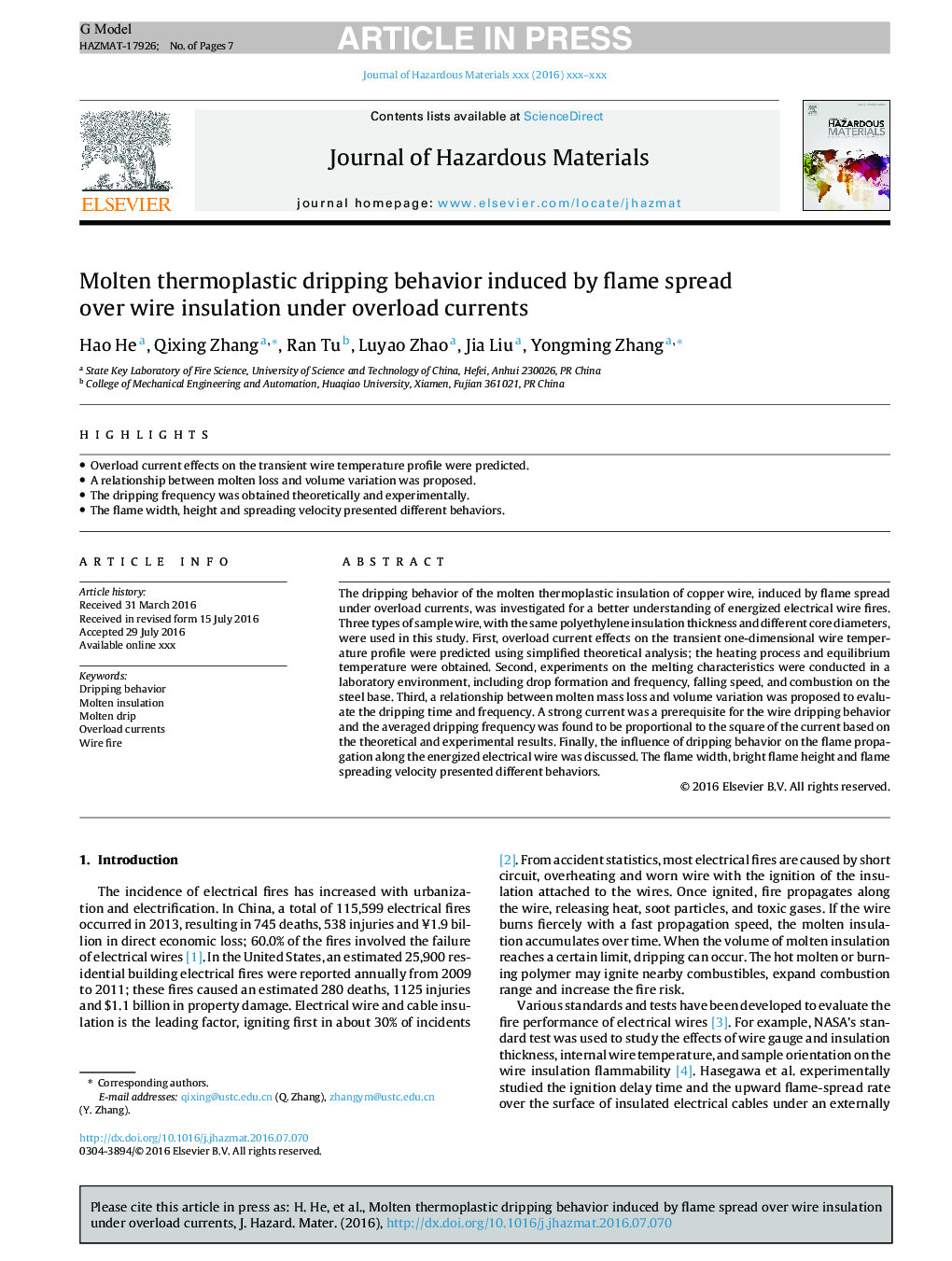| Article ID | Journal | Published Year | Pages | File Type |
|---|---|---|---|---|
| 6969786 | Journal of Hazardous Materials | 2016 | 7 Pages |
Abstract
The dripping behavior of the molten thermoplastic insulation of copper wire, induced by flame spread under overload currents, was investigated for a better understanding of energized electrical wire fires. Three types of sample wire, with the same polyethylene insulation thickness and different core diameters, were used in this study. First, overload current effects on the transient one-dimensional wire temperature profile were predicted using simplified theoretical analysis; the heating process and equilibrium temperature were obtained. Second, experiments on the melting characteristics were conducted in a laboratory environment, including drop formation and frequency, falling speed, and combustion on the steel base. Third, a relationship between molten mass loss and volume variation was proposed to evaluate the dripping time and frequency. A strong current was a prerequisite for the wire dripping behavior and the averaged dripping frequency was found to be proportional to the square of the current based on the theoretical and experimental results. Finally, the influence of dripping behavior on the flame propagation along the energized electrical wire was discussed. The flame width, bright flame height and flame spreading velocity presented different behaviors.
Related Topics
Physical Sciences and Engineering
Chemical Engineering
Chemical Health and Safety
Authors
Hao He, Qixing Zhang, Ran Tu, Luyao Zhao, Jia Liu, Yongming Zhang,
